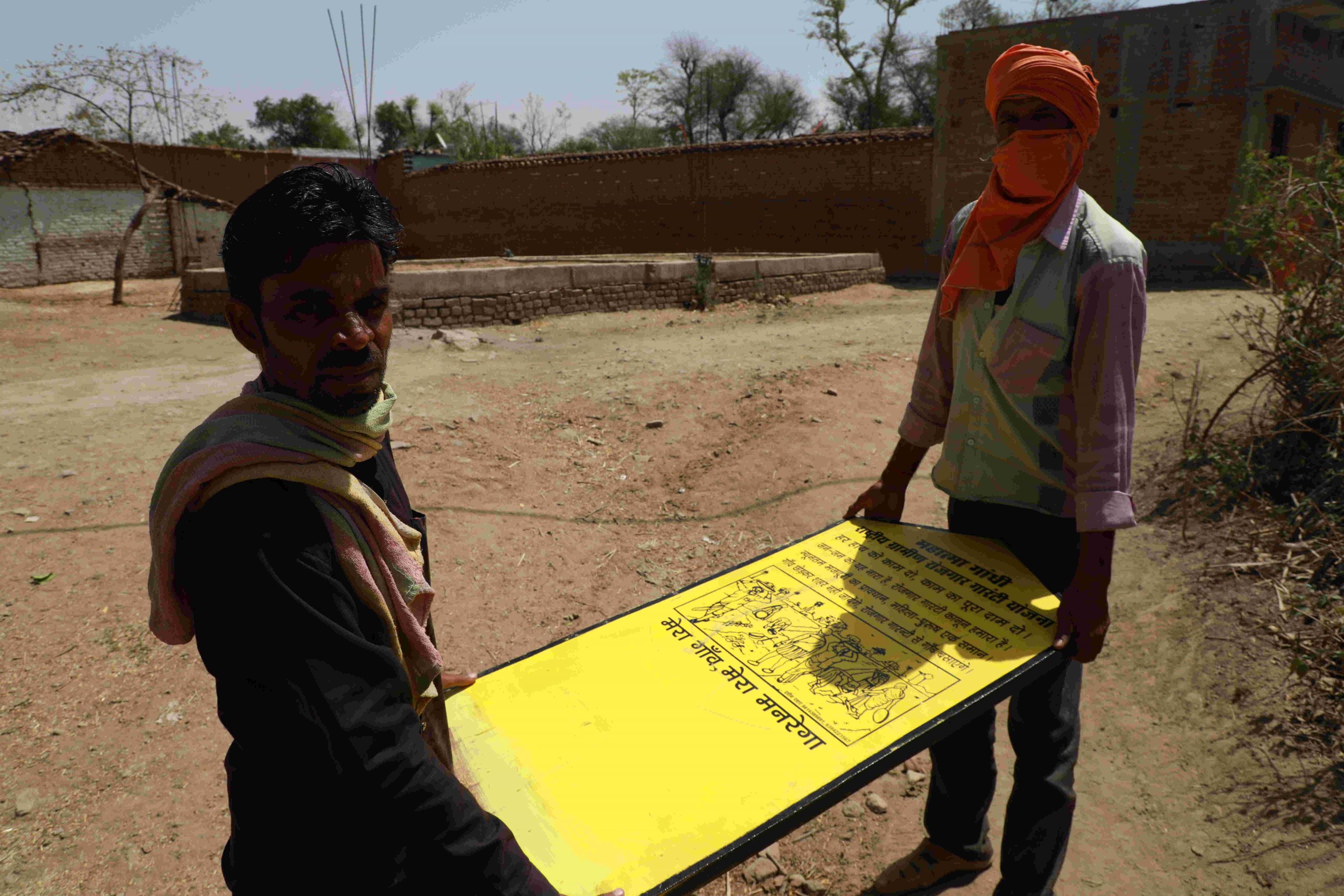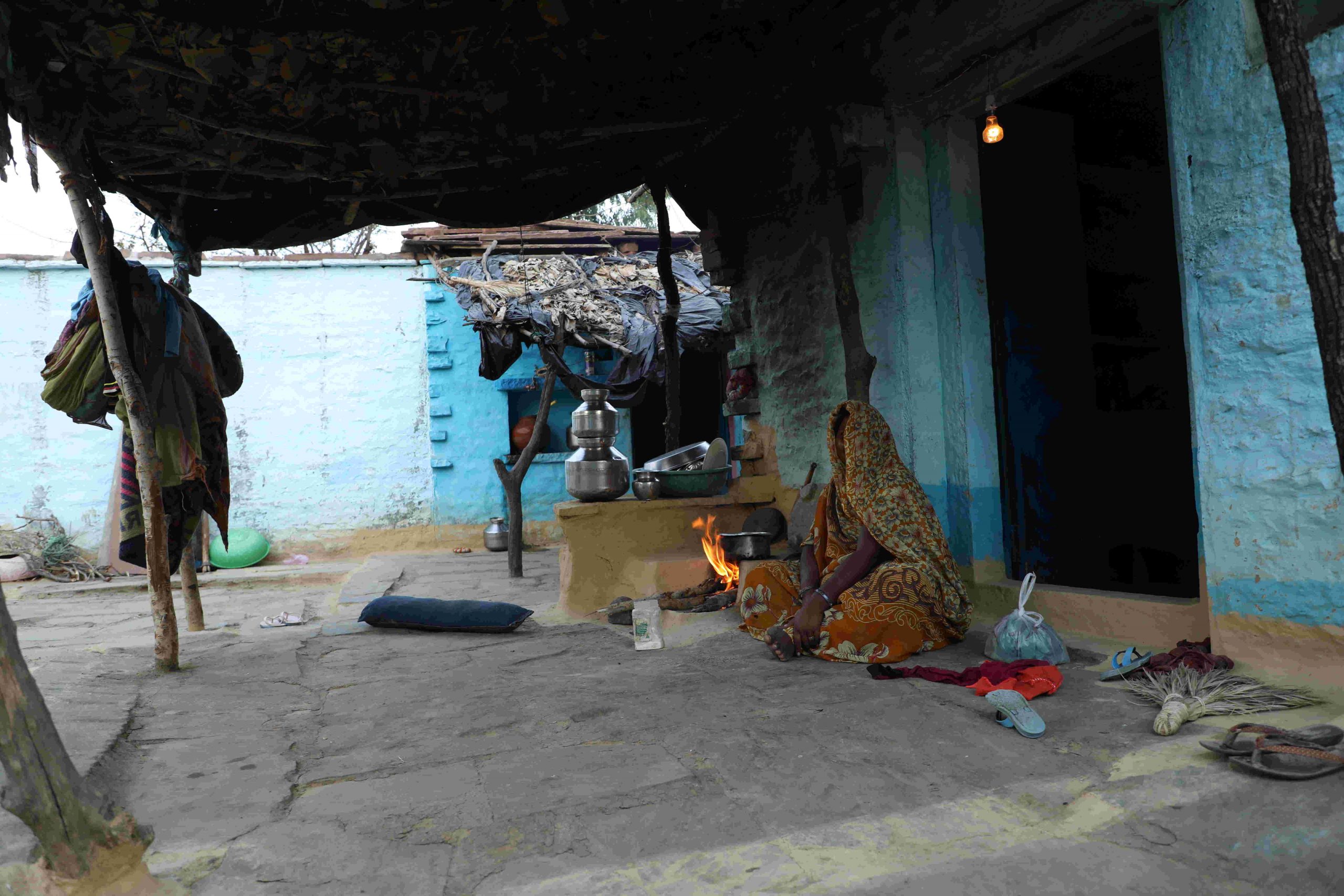In Bundelkhand, MGNREGA has come to the rescue of people during the lockdown
The lockdown has aggravated the hardships of people living in the drought-prone Bundelkhand region. While locals were already struggling, due to the lockdown, many people have migrated back to villages. However, most of them have managed to find work under the MGNREGA scheme. A ground report

Lalitpur (Bundelkhand)
“You should understand that the MGNREGS (Mahatma Gandhi National Rural Employment Guarantee Scheme) was meant for such days (the lockdown due to the coronavirus pandemic). All those who have returned from the cities are looking for work and we are providing them jobs under the MGNREGA scheme. On an average, 10,000 people have been joining daily for the past one week,” said Anil Kumar Pandey, the chief development officer of Lalitpur district in Uttar Pradesh.
The lockdowns led to complete closure. Those who were stuck in the cities had no option but to return to their villages. Many have lost their jobs. A large number of such people and their families were provided employment through the labour-oriented MGNREGA scheme, which has become a source of their income.
“Had the MGNREGS work not been there, it would have been difficult to meet household expenditure because there were no jobs in the village. Due to the lockdown, I could not step out even to sell firewood,” said Mira, a resident of Samongar Gram Panchayat in Bundelkhand, Uttar Pradesh, who has been doing jobs under MGNREGS for the past 17 days.

A large number of migrant labourers had returned home during the lockdown due to corona. More than 50,000 people had returned to Lalitpur, one of the most backward districts of Bundelkhand, until May 20. In Lalitpur district, 63,277 workers have found work under MGNREGS until June 1, as per the government data. In Lalitpur district, 6.65 man-days were created last year, while 7.06 lakh people have been employed already during the lockdown this year.
The Gaon Connection team visited Bundelkhand in May. Yogesh Kumar Shukla, the Lalitpur district magistrate, had then said: “The number of migrants returning to Lalitpur is quite high. More than 50,000 people have returned as per the information that we are getting through the Gram Samitis. It is our effort to provide them employment through self-help groups and MGNREGS while keeping all of them safe from the pandemic. Whoever asks for work, will get it anyhow.”
Surrounded by several districts including Guna, Ashok Nagar, Shivpuri, Tikamgarh and Sagar in Madhya Pradesh, Lalitpur is one of the most backward districts of Bundelkhand. Due to its rocky and arid terrain, the locals either migrate in search of employment or take up mining jobs.
In the last few years, many mines were closed, the MGNREGA scheme suffered administrative setbacks, and natural calamities like repeated droughts and hailstorms had an adverse impact in farming. This led to an increase in migration. Those from Lalitpur, which includes about 7,500 Saharia tribals, moved to Indore, Delhi, Mumbai, Ahmedabad, Surat, Bhiwandi, Punjab and Lucknow to look for jobs.

In 2019, under MGNREGS, 1.14 lakh active job cards were generated in Lalitpur, which had gone up to 1.83 lakh on June 1. During the lockdown, 6,953 new job cards were made, while 50,000 old cards were reactivated. These were the people who had not been working under MGNREGS for the last several years.
More or less, the same situation prevails in other districts of Uttar Pradesh too. According to MGNREGS website, there are about 89 lakh active job cards in Uttar Pradesh. As of June 5, 2020, 49.70 lakh households were provided with employment through MGNREGS. Uttar Pradesh Chief Minister Yogi Adityanath had said in the recent past that his goal is to provide work to 50 lakh labourers daily in the state.
Four different kinds of jobs were undertaken at four places on May 22 at the Silawan Gram Panchayat in Mehrauli Tehsil of Lalitpur. At one place, more than 100 men and women were doing farming. “On an average, 150 people are being given work daily for the past 15 days,” said Prakash Narayan Tripathi, the gram pradhan from the nearby village. “Most of these people are locals, while some have come back from the cities and are working here after completing their quarantine period.”

However, it’s an unprecedented situation. There aren’t so many jobs under MGNREGA and not everyone is getting jobs as per their liking and requirement. Ram Singh Saharia from Balbehat village has not been able to find work under MGNREGS for the past five years. On the other hand, Maniram, who lives in the same village, could find work for just 12 days until May 22 during the lockdown.
“There was no work (quarry or MGNREGS) here so I went to Guna to earn and had returned two months back. Since then I had been sitting idle here until I got the job of digging under MGNREGS for 12 days. Now, yet again, I am sitting idle,” said Maniram. For the last two years, the MGNREGS payments have been delayed and there has been a drop in the number of manhours. However, according to the pradhans and officials, the money is reaching the accounts within seven to 15 days despite the lockdown.
Umesh Chandra Jha, MGNREGS APO in Lalitpur, said: “The MGNREGS scheme is based on the demand for work. Whoever is coming up to seek work, is getting it. Presently, 1,400-1,500 different kind of jobs – ranging from building small dams, drain cleaning, silt extraction, tree plantation and road construction — are currently going on in the entire district. People do not have cash, so the number of job seekers under MGNREGS has risen sharply. This is why more than 60,000 inactive job cards have been reactivated.”
The MGNREGA scheme is also included in the Rs 20 lakh crore financial package announced by the government to rev up the sluggish rural economy due to the corona lockdown. Releasing the fifth instalment of the economic package on May 17, Finance Minister Nirmala Sitharaman had said that the budget of employment scheme in rural areas, MGNREGS is going to be substantially increased. Earlier, the budget was Rs 61,000 crore, which was then provided an additional Rs 40,000 crore.

Talking to Gaon Connection in the recent past, Jayati Ghosh, professor of economics at the Jawaharlal Nehru University and a renowned economist in the rural affairs, had said: “There is no better option than MGNREGS to strengthen the economy at the rural level. There is a need to provide a better budget for MGNREGS.”
Rajasthan Chief Minister Ashok Gehlot is also demanding to increase the 100 days job guarantee under MGNREGS to 200 days during the ongoing crisis.
While the government’s labour-based MGNREGA scheme has emerged as a suitable alternative to the rural economy, fair and transparent arrangements are essential for providing work under the scheme. For this, it is imperative to monitor the scheme so that every needy can get the work as per demand.
Summing up, Guddi from Balbehat village, situated on the border of Uttar Pradesh and Madhya Pradesh in Bundelkhand, said: “If one is able to find work in the villages, who would want to go away leaving behind one’s home?”
Arvind Singh Parmar contributed to this story.

